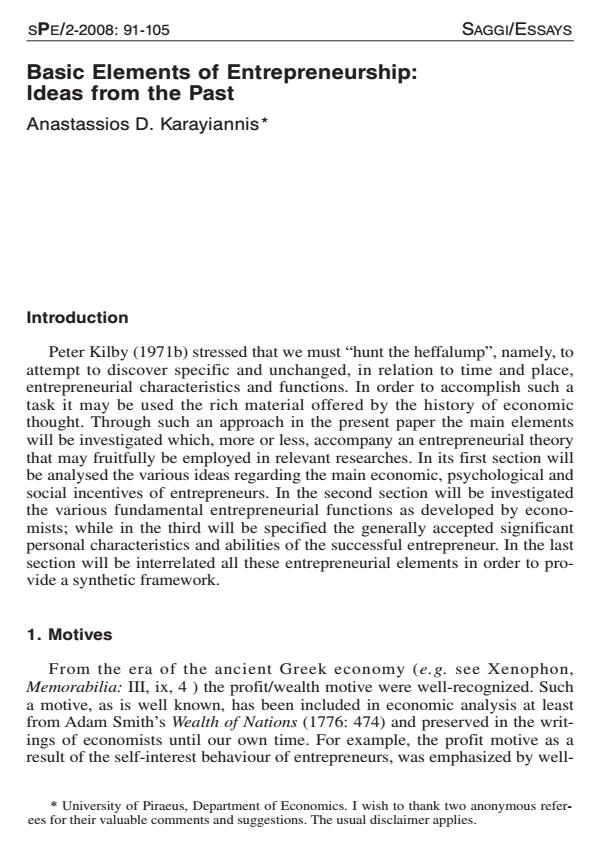Basic Elements of Entrepreneurship: Ideas from the Past
Journal title STORIA DEL PENSIERO ECONOMICO
Author/s Anastassios D. Karayiannis
Publishing Year 2009 Issue 2008/2
Language English Pages 15 P. 91-105 File size 633 KB
DOI 10.3280/SPE2008-002004
DOI is like a bar code for intellectual property: to have more infomation
click here
Below, you can see the article first page
If you want to buy this article in PDF format, you can do it, following the instructions to buy download credits

FrancoAngeli is member of Publishers International Linking Association, Inc (PILA), a not-for-profit association which run the CrossRef service enabling links to and from online scholarly content.
<em>Basic elements of entrepreneurship: ideas from the past</em> - In order to develop an entrepreneurial theory capable of holding true in an absolutist environment, there are basically two approaches: (a) researching the historical economic data; and (b) analyzing the economic views and ideas held throughout history. The present paper will follow the second approach and will endeavor to clarify that there exist some fundamental entrepreneurial motives, characteristics and functions that have remained the same, at least from the time of ancient Greece until the present epoch. On such grounds, an entrepreneurial theory may be developed with ingredients that are non-destructible with the passage of time and in terms of changing economic conditions, and thus may be used as a universally accepted model of entrepreneurship. JEL classification:B00; M13 Keywords: entrepreneurship; entrepreneurial motives; entrepreneurial characteristics; entrepreneurial function
- DESENVOLVIMENTO DE METODOLOGIA PARA O ENSINO DE EMPREENDEDORISMO EM SÉRIES INICIAIS Fernanda Maria Felício Macedo Boava, Diego Luiz Teixeira Boava, Amanda Fontes Silva, Iaísa Helena Magalhães, in Revista Contemporânea /2024 pp.e3446
DOI: 10.56083/RCV4N2-134
Anastassios D. Karayiannis, Basic Elements of Entrepreneurship: Ideas from the Past in "STORIA DEL PENSIERO ECONOMICO" 2/2008, pp 91-105, DOI: 10.3280/SPE2008-002004